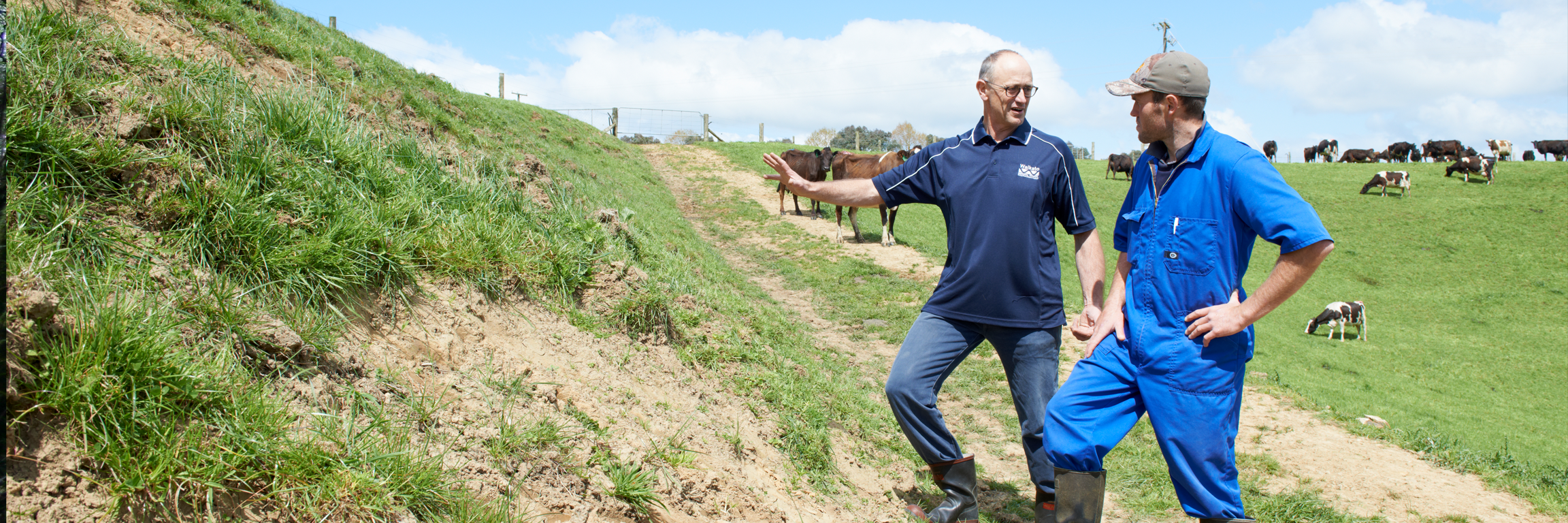Managing different soil issues
Prof. Thomas Walker of ‘Maggie’s Garden Show’ fame, and a former professor of soils at Lincoln University, often shares the advice given to him by an old English farmer during World War II.
“The secret to managing soil well is to treat it like a new-born baby. Remember to keep its:
- bottom dry – use drainage carefully to prevent waterlogging
- belly full – manage nutrients well
- face clean – rotate grazing to manage weeds and utilise your grass well.”
Different soils in our region have different characteristics, and different management needs. Find out about different soil management needs in the Waikato region:
Land capability and use
What land is being used for today may be quite different from what it is capable of being used for in the long-term. It’s important to know the limitations of your land and its soil, and what uses it is capable of supporting.
Land use capability classes are one way of assessing the limitations of your land. Land is assessed according to its:
- tendency to erode – for example, flat land versus steep hill country
- type of soil
- wetness – for example, too much or too little drainage
- climate – including hours of sunshine, rain levels, wind, maximum and minimum temperatures.
There are eight land use capability classes, ranging from Class I (flat land with good soil and few limitations) to Class VIII (steep land with severe physical limitations):
- Classes I to IV are suitable for cultivation.
- Classes V to VII are not suitable for cultivation, but may be better suited to farming or forestry.
- Class VIII is not suitable for any productive use and is best left in native bush for catchment protection.
The table below gives more detailed descriptions of the different land use capability classes. It also gives the percentage of the Waikato Region falling into each category.
| Land Use Capability Class | Description | Percent of Waikato Region |
| I | Good multi-use land, flat to very gently sloping, deep, easily worked soil, negligible risk of erosion. | 1.9 |
| II | Flat to gently rolling land with slight physical limitations, may be used for cultivated cropping, horticulture, pastoral farming or forestry. | 11.2 |
| III | Land with moderate physical limitations for cultivation; may be used for cultivated cropping, horticulture, pastoral farming or forestry. | 11 |
| IV | Land with severe physical limitation for cultivation; constraints on the choice of crops able to be grown; may require intensive soil and water conservation treatment and careful management practices. | 14.1 |
| V | Too many limitations to be cultivated for cropping. Negligible to slight erosion risk under pastoral or forestry use. Typically stony, wet or sloping land with high quality, stable soils. Where slopes prevent cultivation some horticulture may be suitable. | 0.4 |
| VI | Moderate limitations for pastoral use. Suitable for forestry. | 36.7 |
| VII | Severe limitations for pastoral use. Suitable for forestry. | 15.9 |
| VIII | Severe physical limitations; not suitable for any form of cropping, pastoral or production forestry use; only suitable for watershed protection. | 5.3 |
| Other | Includes lakes, quarries, and towns. | 3.5 |
Get to know your soils
Soils aren’t created equal. When managing soils for pastoral farming, it’s helpful to think about:
- the strengths and weaknesses of your soils
- whether your soils are prone to pugging in the winter
- whether your soils are prone to drying out in summer.
To learn more about your soils, consider mapping them. Try keeping records about how your soils and pastures cope with wet and dry extremes over time.
Threats to our soils
In the Waikato region, two thirds of our soils need special management to maintain their quality and stability. How we manage our land and soil is a critical issue for long-term sustainability.
There are four main threats to land and soil in the Waikato region:
- erosion – the loss of soil from land
- pugging and compaction – damaging the soil structure and its ability to support life
- contamination – from excessive nutrients or chemicals not normally present
- loss of organic matter and nutrients – for example, leaching of nutrients.
How susceptible a soil is to these threats influences what land uses it is suitable for.

